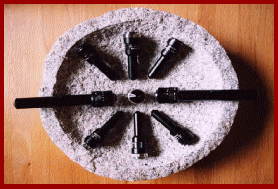| |||||||||||||||||||||||||||||||
Welcome to the | |||||||||||||||||||||||||||||||
 | |||||||||||||||||||||||||||||||
 | |||||||||||||||||||||||||||||||
In general terms, the less wide angle the pinhole lens, the more light will be required to achieve a decent picture. If a 4mm lens is used (wideangle on a 1/3” camera), this has a maximum aperture of around f2, which is perfectly acceptable for most situations; a 9mm lens which is roughly described as a ‘standard’, has a much slower maximum aperture of f3.4 (i.e. it needs considerably more light to produce approximately the same quality of image as the 4mm). If this same lens is then fitted with a x2 range extender to make it into an 18mm (2.25x magnification) telephoto, the maximum aperture then becomes something in the order of f5.2 which is very slow indeed, and needs loads more light to produce a half decent image. Similarly, a 6.2mm f2 wideangle pinhole lens, will become a 12.4mm (1.55x magnification) telephoto lens with a maximum aperture of around f2.8. If you’d like to see a simplified table of what these specialist covert lenses can achieve, "click here" - under development. Having briefly considered the implications for using various covert ‘pinhole’ lenses, Doktor Jon will now explain in a little more detail, all the various background considerations for achieving the effective use of covert CCTV cameras. The two main areas which often require the most careful planning are the cameras power supply, and also the method of transmitting the signal to an appropriately secure recording or remote monitoring location. | |||||||||||||||||||||||||||||||
 | |||||||||||||||||||||||||||||||
IMPORTANT: No material may be reproduced, copied or redistributed from this site, © doktorjon.co.uk 2004 - 2008 Homepage...:...Gateway...:...Technical Gateway....:....Quickfind Index....:....Equipment Directory | |||||||||||||||||||||||||||||||

